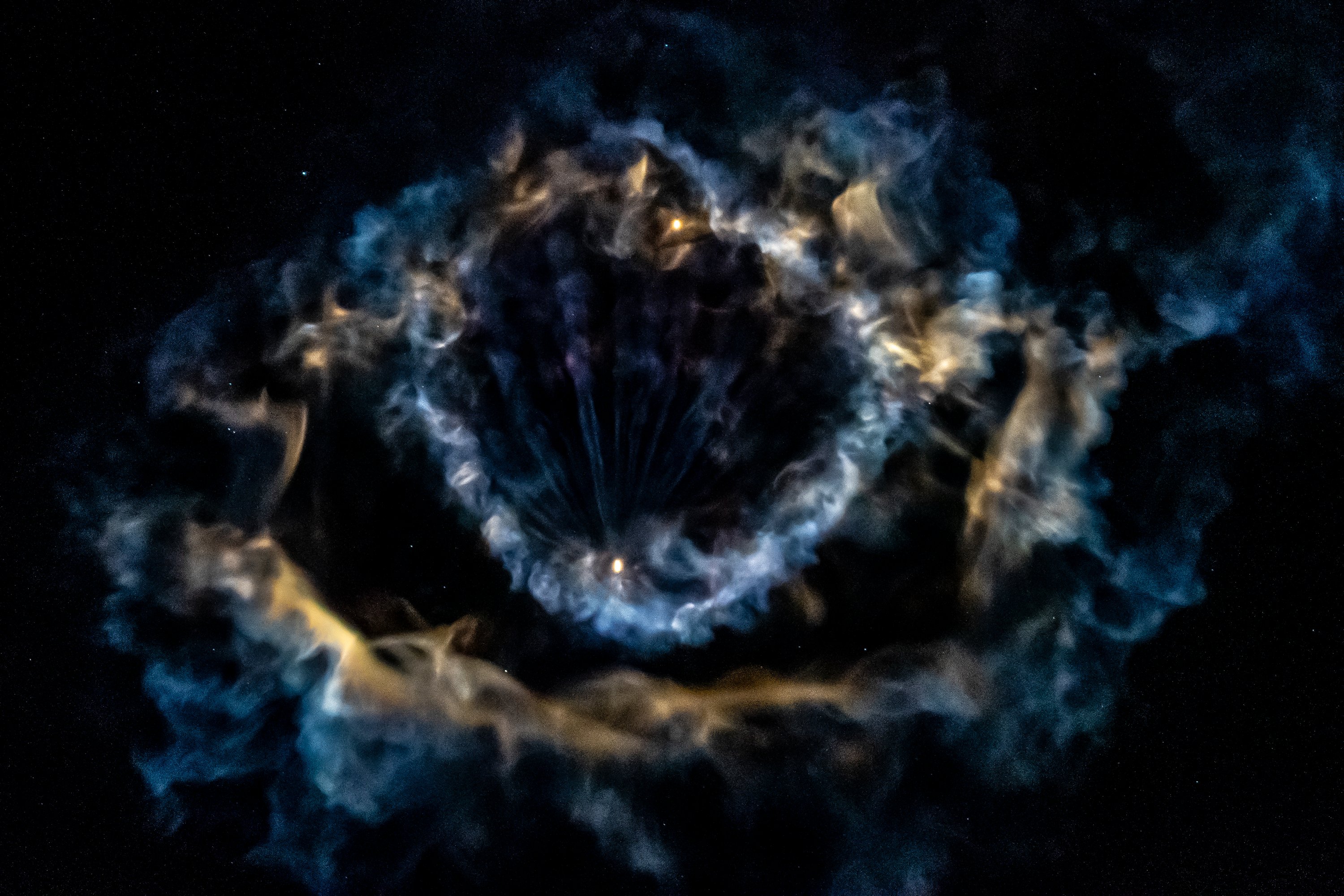Now Reading: SpaceX Falcon 9 rocket creates nebula-like ring in night sky | Space photo of the day for June 27, 2025
-
01
SpaceX Falcon 9 rocket creates nebula-like ring in night sky | Space photo of the day for June 27, 2025
SpaceX Falcon 9 rocket creates nebula-like ring in night sky | Space photo of the day for June 27, 2025

During the early hours of June 25, 2025, a SpaceX Falcon 9 rocket blasted off into space, headed for the International Space Station. The launch was part of the private Axiom-4 space mission carrying four astronauts on SpaceX’s Dragon spacecraft.
What is it?
The Falcon 9 is a two-stage rocket that often carries cargo, Starlink satellites, or crew members in its corresponding Dragon spacecraft. Its reusable system aligns with SpaceX’s mission to make spaceflight less costly, and thus more accessible.
When the rocket’s first stage booster returns to Earth for launch site landings, the stage’s boost back burn can sometimes create these plumes of exhaust high in the atmosphere.
Where is it?
The Falcon 9 rocket launched from NASA’s Kennedy Space Center in Florida and is currently headed for the International Space Station.

Why is it amazing?
The Ax-4 launch is a mission of “firsts,” as it carried the first ever-people from India, Hungary and Poland into space, including pilot Shubhanshu Shukla and mission specialists Sławosz Uznański-Wiśniewski and Tibor Kapu. Leading the team is former NASA astronaut Peggy Whitson, currently Axiom’s director of human spaceflight.
Ax-4 was not easy to get off the ground, however. The mission faced two weeks of delays since its original launch date of June 11, 2025. These delays were caused by high winds as well as leaks on both the launch vehicle and the ISS.
But finally, on the morning of June 25, 2025, the Falcon 9 rocket successfully launched, ferrying the crew toward the ISS. Once there, the astronauts will spend two weeks in orbit and conduct over 60 experiments before returning back to Earth.
Want to learn more?
You can read more about the Ax-4 mission and SpaceX’s Falcon 9 rocket as the private spaceflight sector continues to expand into our night skies.
Stay Informed With the Latest & Most Important News
Previous Post
Next Post
-
 012024 in Review: Highlights from NASA in Silicon Valley
012024 in Review: Highlights from NASA in Silicon Valley -
 02Panasonic Leica Summilux DG 15mm f/1.7 ASPH review
02Panasonic Leica Summilux DG 15mm f/1.7 ASPH review -
 03How New NASA, India Earth Satellite NISAR Will See Earth
03How New NASA, India Earth Satellite NISAR Will See Earth -
 04And Thus Begins A New Year For Life On Earth
04And Thus Begins A New Year For Life On Earth -
 05Astronomy Activation Ambassadors: A New Era
05Astronomy Activation Ambassadors: A New Era -
06SpaceX launch surge helps set new global launch record in 2024
-
 07From Polymerization-Enabled Folding and Assembly to Chemical Evolution: Key Processes for Emergence of Functional Polymers in the Origin of Life
07From Polymerization-Enabled Folding and Assembly to Chemical Evolution: Key Processes for Emergence of Functional Polymers in the Origin of Life




















